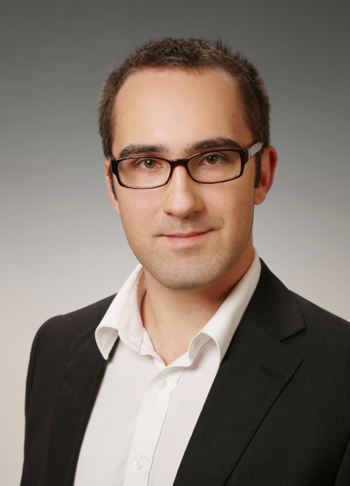gold free contacts to algan/gan heterostructures
Marcin Hajlasz is a PhD student in the research group Integrated Devices and Systems (IDS). His supervisor is prof.dr. D.J. Gravesteijn from the faculty of Electrical Engineering, Mathematics and Computer Science
 Transistors and diodes based on AlGaN/GaN are suitable candidates for high-voltage and high-speed electronics due to the GaN material properties such as wide bandgap, large breakdown field, high electron saturation velocity and good thermal conductivity. When thin AlGaN layer is grown epitaxially on GaN, it is typically under tensile stress. Consequently, we observe piezoelectric polarization, which is additional to the spontaneous polarization in these materials. The polarization induced sheet charge density forces free electrons to try to compensate for it. These charges accumulate at the heterojunction of AlGaN and GaN layers to create a Two-Dimensional Electron Gas. The electrons are confined to the interface due to band bending in the GaN, and in order to make a contact to them, it is necessary to pass through the AlGaN layer.
Transistors and diodes based on AlGaN/GaN are suitable candidates for high-voltage and high-speed electronics due to the GaN material properties such as wide bandgap, large breakdown field, high electron saturation velocity and good thermal conductivity. When thin AlGaN layer is grown epitaxially on GaN, it is typically under tensile stress. Consequently, we observe piezoelectric polarization, which is additional to the spontaneous polarization in these materials. The polarization induced sheet charge density forces free electrons to try to compensate for it. These charges accumulate at the heterojunction of AlGaN and GaN layers to create a Two-Dimensional Electron Gas. The electrons are confined to the interface due to band bending in the GaN, and in order to make a contact to them, it is necessary to pass through the AlGaN layer.
Due to the complexity of AlGaN/GaN devices, they are not yet fully understood. This is especially true for the electrical contacts, where the relatively well characterized and described Au-containing metal stacks have to be replaced by Au-free stacks to allow production at scale. The mass production of GaN devices, required for consumer applications of GaN, makes it necessary to use existing Si fabrication facilities, where it is not allowed to use gold, as very low concentrations lead to strong performance degradation of Si devices. Therefore, it is crucial to investigate alternative metal stacks, such as for example TiW, as a replacement for gold. The aim of this thesis is to broaden the understanding of Ohmic and Schottky contact to AlGaN/GaN by means of material characterization techniques and novel electrical test structures.
The research on the Ohmic contacts in this thesis aims at providing insight about the electrical transport mechanism from the metal to the 2DEG in the AlGaN/GaN heterostructures. An in-depth study of the nature of these contacts, with emphasis on the nature of the charge transport into the 2DEG, the reactions occurring at the interfaces between the metals and the GaN is presented. For this purpose, accurate measurement structures were designed and new characterization methods have been used. For the Schottky gate structures, metals and alloys with the required high work function were investigated. An in-depth study of the nature of the contact was made. Phenomena specific to the AlGaN/GaN, such as metal stack strain influence on the Schottky barrier and barrier height inhomogeneity was investigated.





